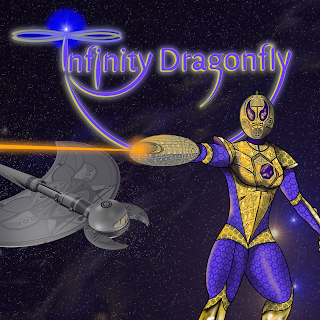Review: Blade Runner: Origins
Early in the 21 Century, the Tyrell Corporation advanced Robot evolution into the Nexus phase – a being virtually identical to a human – known as a Replicant.
Superior in strength and agility, the Replicants were created to be used as off-world slave labor or in the hazardous, high-collateral combat situations or colonization of other planets.
Replicants who escaped and returned to Earth were hunted by special police squads – Blade Runner units – with order to kill any trespassing Replicant upon detection.
This is the story of the first Blade Runner…
.......
2009, Los Angeles, but not as we know it...
LAPD detective Cal Moreaux is called in to investigate the suicide of Dr Lydia Kine, a bioengineer with the Tyrell Corporation. The corporation wants the case dealt with quickly and quietly, and the police department wants the same thing: Tyrell is very rich and very influential. Moreaux's role here is as a "cleaner", someone who will swiftly tidy up the matter and make it go away.
Admitted to Kine's lab, he finds the scene undisturbed: the doctor has hanged herself from the ceiling. Her assistant Effie, who found the body, confirms that Kine was alone when she died. Before she can answer any more questions, Tyrell executive Ilora Stahl - tall, imposing and officious - appears to act as the official liaison for the investigation.
Learning little, Moreaux leaves... only to be approached by Marcus, Kine's brother. He insists that Lydia would never have committed suicide. He also says he is being followed. And he is, not by Tyrell's goons, but by someone - or something - much stranger...
Blade Runner: Origins by writers Mellow Brown, Mike Johnson and K. Perkins and artist Fernando Dagnino is a suitably noir-styled prequel to Ridley Scott's iconic 1982 movie. The same themes are in evidence (as in Do Androids Dream of Electric Sheep?, the 1968 novel by Philip K. Dick upon which the movie was based)... Can a machine feel? Can a robot truly have emotions? A soul???
In the science fiction universe, of course, the answer to this question will always be a resounding Yes. A synthetic psyche that looks like a duck, quacks like a duck, etc. cannot be denied its authentic status ... at least in the eyes of the author. And the reader will be left in no doubt, thanks to all the right emotional buttons being pushed to remind them that robots can feel fear, pain, anguish, hope, love...
Dagnino's images evoke the Eighties cyberpunk vibe of the movie: densely-packed cityscapes, neon glowing through the steam, soft-porn holograms, shady street vendors peddling borderline technology, surreal strippers in retro-futuristic sleaze pits... This is a world where opposites collide: the gleaming with the gritty; the shiny with the sordid. A world just a few steps ahead of our own, in which we are overloaded with information and stimulation, desensitised to the natural world, blinded to the suffering and injustices around us thanks to our high-tech bread and circuses. Distraction is the latest opium of the masses; apathy its fallout.
Callousness is the capital crime perpetrated in this narrative. The subjugation of a sapient class of beings has obvious parallels with issues of race and slavery. The spectre of the Replicant is a futuristic horror: a creature that looks human but kills without empathy. However, it also taps into more primal legends: the changelings, doppelgängers and golems of ancient myth. To the paranoid mind, the 'other' - a different race or culture - is a demon in disguise.
But, just like Mary Shelley's famous monster, it can also be the avenging angel, meting out judgement to humankind for our sins.
Zak Webber
Twitter - @sfcomicartist / Instagram - @sfcomicartist
JOIN US ON FACEBOOK! - SCI-FI COMIC NEXUS
*****
***
*




Comments
Post a Comment